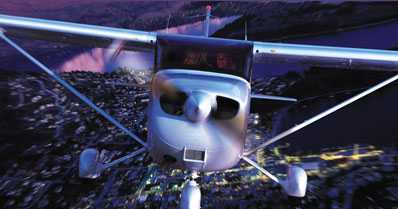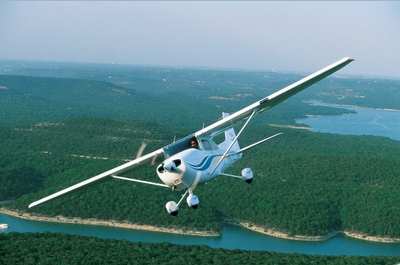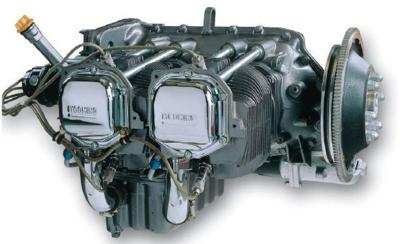NTSB Probable Cause Mentions Nothing About Powerplant Issues Being Responsible for Fatal Mountain Impact
News/Analysis/Commentary By James R. Campbell, ANN CEO/Editor-In-Chief
O...K... here we go again. A jury of our "peers" has rocked the aviation world with a stunning verdict... and we use the word stunning for both monetary as well as evidentiary reasons.

And yes, they awarded a total of 26 million smackers.
According to a self-congratulatory press release by lawyers crowing about their most recent success in court, "A Seattle jury has awarded more than $26 million in compensatory and punitive damages against AVCO Corporation, doing business as Lycoming Engines, for a July 27, 2008 plane crash near McMurray, Washington resulting in the deaths of all three on board the plane. The trial in the King County Superior Court began February 4 and concluded March 21 (2013)."
The presser claims that, "Plaintiffs claimed that the crash resulted from the aircraft’s Lycoming engine failing in flight as a result of a defective carburetor float, and Lycoming’s failure to warn of the defect. The jury awarded $17,283,000, including $6,000,000 in punitive damages, to Plaintiff Paul Thomas Crews, represented by Robert B. Hopkins and Matthew K. Clarke of Landye Bennett for the deaths of pilot Brenda Houston and her 10-year old daughter, Elizabeth Crews, in the plane crash. The jury also awarded $8,900,000 to Plaintiff Estate of Virgil Becker, Jr., represented by Robert Hedrick and James Anderson of the Seattle law firm, Aviation Law Group, PS, for the death of Dr. Tory Becker in the plane crash."
The lawyers seem quite certain that the Lycoming O-320 failed (or was otherwise compromised) and caused the deaths of three people -- and they apparently convinced a jury that this was the case... but the real question is whether or not the jury had the requisite expertise to render a judgement in this matter -- simply because the probable cause reached by EXPERT NTSB investigators in this accident mentions NOTHING about engine failure as causal in this tragedy...

Still, Lycoming is supposed to pony up $26 million bucks because a jury apparently knows better than the most expert aviation investigative organization in the world.
Hmmmm....
The accident raises a great many questions and involves an aircraft with an engine that was WELL past TBO (though, still, no evidence suggests an actual failure of that high-time engine), and a pilot flying "VFR" in low visibility in high-terrain.
What happened? The NTSB states that on July 27, 2008, at 1439 Pacific daylight time, a Cessna 172N airplane, N75558, impacted trees and terrain while maneuvering near McMurray, Washington. The airplane was registered to Crest Airpark, Inc., Kent, Washington, and operated by the pilot, under the provisions of Title 14 Code of Federal Regulations (CFR) Part 91. The commercial pilot and two passengers were killed. The airplane was substantially damaged. Visual meteorological conditions prevailed at the time of departure and instrument meteorological conditions prevailed in the area at the time of the accident. No flight plan was filed for the personal flight. The cross-country flight originated from the Roche Harbor Airport (WA09), Roche Harbor, Washington, about 1402, with an intended destination of Auburn, Washington.
Let's look at other 'facts" expressed by the NTSB... which published a Probable Cause that stated that the tragedy occurred after, "The pilot's improper decision to continue VFR flight into instrument meteorological weather conditions. Contributing to the accident were low ceilings, reduced visibility, and mountainous terrain."

The nearly 10,000 hour airframe was powered by an elder Lyc O-320 with 2,559.8 hours since its last major overhaul -- which is only interesting when you factor in the NTSB's finding (in the course of examining the wreckage) that the engine exhibited the kind of internal wear associated with a high-time engine... but (YET AGAIN) did not state that there was ANY kind of engine stoppage.
More to the point, though, was the fact that an aging Cessna 172, with two adults and a 10 year old child launched off on a scuzzy day as a VFR op, (though the pilot was IFR rated) until it impacted high terrain in a "heavily wooded mountainous area."
Prior to the accident near McMurray, Washington, a number of trained observers reported low visibilities and ceilings in the area of the eventual impact... A Skagit County Sheriff Deputy, who was located just north of the accident site, reported "spotty rain showers" and a "typical marine layer" were present around the time of the accident. A witness who was flying in a Cessna 170 reported she intended to fly from Blakely, Washington, to Auburn. During the flight, they elected to return to Blakely due to lowering ceilings and decreasing visibility south of Port Townsend, Washington. During the return flight to Blakely, she was receiving traffic advisories from Whidbey Approach Control. The controller advised her about opposite direction traffic. The witness stated that she observed a Cessna that matched the accident airplane passing in front of her position on an eastbound heading. She added that during this time, the visibility to the east of her current position appeared to be "very poor."
The NTSB's Meteorological Report stated that, "A review of recorded data from the automated weather observation station at Arlington Municipal Airport, Arlington, Washington, located about 11 miles southwest of the accident site reported at 1435; wind from 320 degrees at 7 knots; visibility 10 statute miles; scattered cloud layer at 500 feet above ground level (agl), broken cloud layer at 2,000 feet agl, and an overcast ceiling at 2,700 feet agl; temperature 15 degrees Celsius; dew point 13 degrees Celsius; and an altimeter setting of 30.05 inches of Mercury."
The National Transportation Safety Board's staff meteorologist reviewed weather data and reported that the northwest portion of the National Weather Service (NWS) Weather Depiction Charts for 1200 depicted an area of instrument flight rules (IFR) conditions over Washington in the vicinity of the accident site. Surrounding that area was an area of marginal visual flight rules (MVFR) conditions over portions of western Washington, Oregon, and northern California. The closest visual flight rules (VFR) conditions were depicted over eastern Washington. MVFR conditions were depicted over the route of flight and the accident site, with IFR conditions in the immediate vicinity. The closest station model to the south of the accident site depicted MVFR conditions with a ceiling overcast at 1,900 feet agl. The northwest section of the NWS hourly Radar Summary Chart for 1419 PDT (2119Z) depicted a band of "light" intensity echoes associated with rain showers over the Cascade Range and Puget Sound area, and in the
immediate vicinity of the accident site.
The northwest section of the NWS hourly Radar Summary Chart for 1419 depicted a band of "light" intensity echoes associated with rain showers over the Cascade Range and Puget Sound area, and in the immediate vicinity of the accident site.

In the minutes prior to impact, the pilot was in communication with controllers for a portion of the flight. The NTSB report says that a review of communication transcripts provided by Whidbey Approach Control revealed that the pilot initially contacted Whidbey Approach Control at 1408. At 1410, the controller notified the pilot of the accident airplane that he didn't have "anybody go south of bush point in the last hour VFR." The pilot responded to the controller that it "looks pretty good so far." At 1413, the controller informed the pilot to maintain VFR at or above 2,500 feet msl due to other traffic in the vicinity. At 1414, the controller advised the pilot to contact Whidbey Approach Control on 120.70, and the pilot acknowledged. The pilot contacted Whidbey Approach Control at 1415, reporting they were at an altitude of 2,500 feet msl. The controller canceled the altitude restriction for the accident airplane at 1417, followed by an acknowledgment from the pilot.
At 1419, the controller reported to another aircraft in the vicinity that the weather around Seattle extending north 15 to 20 miles was "pretty limited visibility with low ceilings," and subsequently asked if the pilot of the accident airplane copied that radio transmission. The pilot of the accident airplane acknowledged that they heard the controller's transmission and reported that they were going to initiate a descent to 2,000 feet msl. The controller responded, "maintain VFR altitudes your discretion." At 1423, the controller terminated radar service with the accident airplane and informed the pilot to squawk VFR and frequency change approved. The pilot subsequently responded acknowledging the controller's request. No further radio communications were received from the accident airplane.
Most problematic, however, are the details noted in the NTSB Report's 'History of Flight' which states that a review of radar data provided by the FAA revealed that a primary radar contact was initially obtained at 1404, about 5.2 miles southeast of WA09 at an altitude of 2,200 feet mean sea level (msl). The flight path of the airplane was generally on a southeasterly heading with an altitude between 2,400 and 2,500 feet msl until 1420, where a gradual descent to 900 feet msl was observed. At 1427, a slight climb was initiated until approaching the vicinity of Arlington Airport, Arlington, Washington, at 1429. While in the vicinity of Arlington, radar data depicted the airplane initiated a left turn from a southeasterly course to a northwesterly course while climbing to an altitude of 1,700 feet msl. At 1431, the airplane initiated a right turn to northerly course until 1434, where the airplane performed a series of left and right turns with the altitude fluctuating between 1,500 feet msl and 2,900
feet msl. The last three radar returns were consistent with the airplane being in a descending right-hand turn. The last recorded radar return was at 1439, located 0.17 miles southwest of the accident site at an altitude of 2,200 feet msl.
So... let's boil this down... excursions of nearly 1500 feet, multiple turns in opposing directions, and a descending turn that went off scope about the time and place of the eventual impact. There had been comm's with the pilot just minutes before and no mention of powerplant difficulties were reported... while a pattern of altitude and heading deviations parrot a number of those that have occurred in the past as pilots attempted to avoid obstacles in lousy visibility until they either escaped the terrain or a CFIT impact took place.
It is a horrific tragedy... and you don't have to tell me about the impact the death of a loved one in airplane accident can have on those left behind... but after perusing a great deal of data furnished by the NTSB, we have yet to see a single bit of serious evidence that suggests that the Lycoming took a hike and that they should, therefore, be held responsible. While there was plenty of evidence that N75558 was a tired airplane with a tired engine (and any PIC flying the bird with that knowledge should have been concerned about that fact), we're scratching our heads trying to search for a FACT that suggests that Lycoming was causal in this accident other than the fact that the engine allowed the flight to occur in the first place.
We're not sure if this is another legal mess in which the "Deep Pocket" gets to carry the burden for a jury's desire to salve the wounds of grieving families but the data surrounding this accident is sufficiently questionable that we can't believe that it won't be appealed and put in front of more learned legal professionals (an Appeals Judge), and that the verdict won't be overturned.
In the meantime, we have calls into the lawyers that won the case and the folks at Lycoming -- who are looking at a $26 million hole in their pocketbooks. If there is no REAL evidence to support Lycoming's involvement in this accident, then verdicts like this one are but another in the "Death By A Thousand Cuts" that aviation is dealing with, and has been suffering from, for decades. Without serious legal reform and as long as these kind of massive verdicts in what appears to our trained and untrained eyes (i.e., Trained in aviation but not trained in the necessary legal skills) continue, the future of civil aviation remains murky, endangered and even doubtful.
More info to come...


 ANN's Daily Aero-Linx (04.16.24)
ANN's Daily Aero-Linx (04.16.24) Aero-News: Quote of the Day (04.16.24)
Aero-News: Quote of the Day (04.16.24) Airborne 04.10.24: SnF24!, A50 Heritage Reveal, HeliCycle!, Montaer MC-01
Airborne 04.10.24: SnF24!, A50 Heritage Reveal, HeliCycle!, Montaer MC-01 Airborne 04.12.24: SnF24!, G100UL Is Here, Holy Micro, Plane Tags
Airborne 04.12.24: SnF24!, G100UL Is Here, Holy Micro, Plane Tags Airborne-Flight Training 04.17.24: Feds Need Controllers, Spirit Delay, Redbird
Airborne-Flight Training 04.17.24: Feds Need Controllers, Spirit Delay, Redbird








